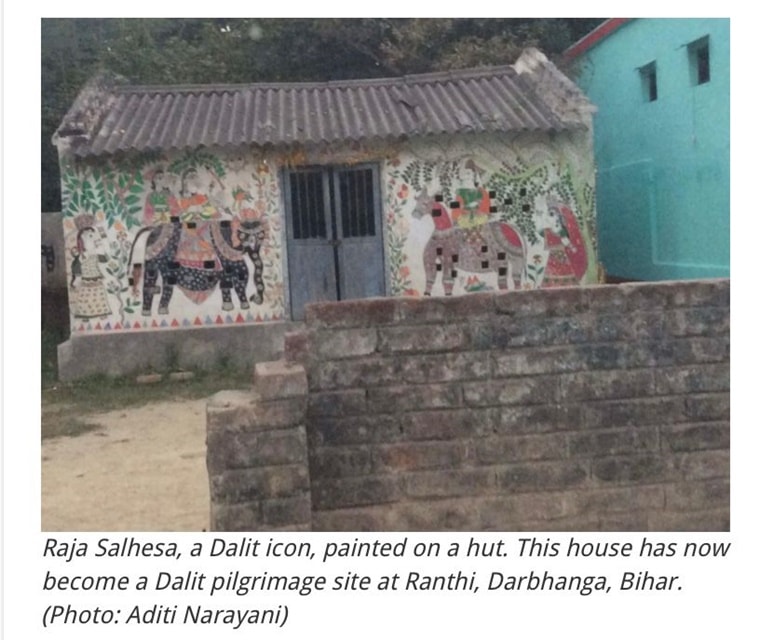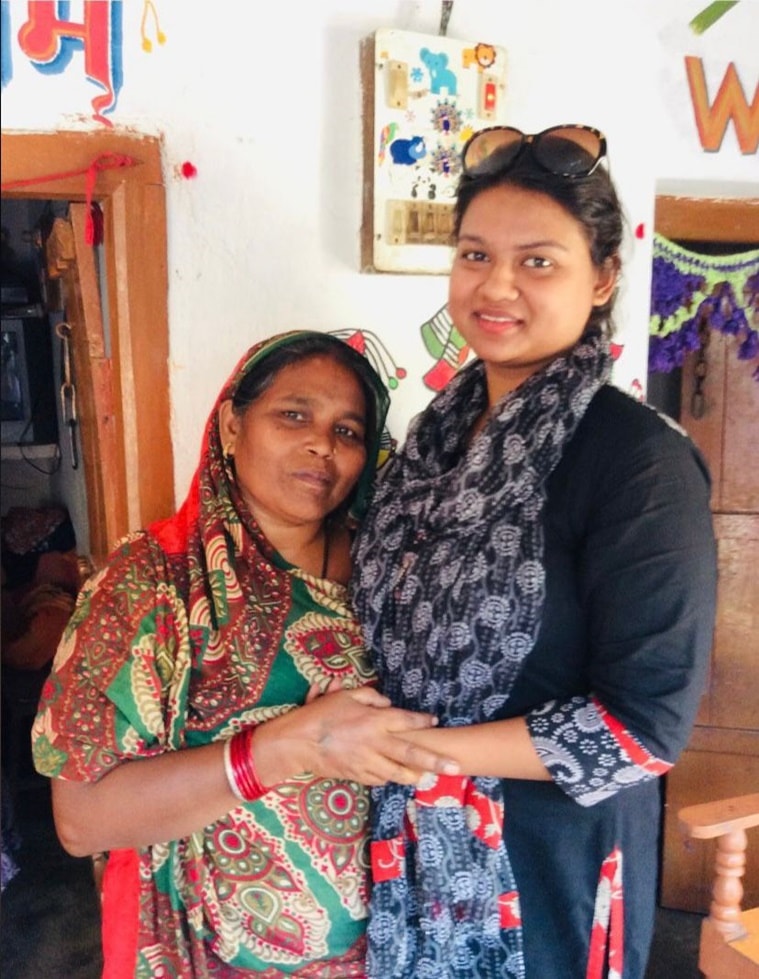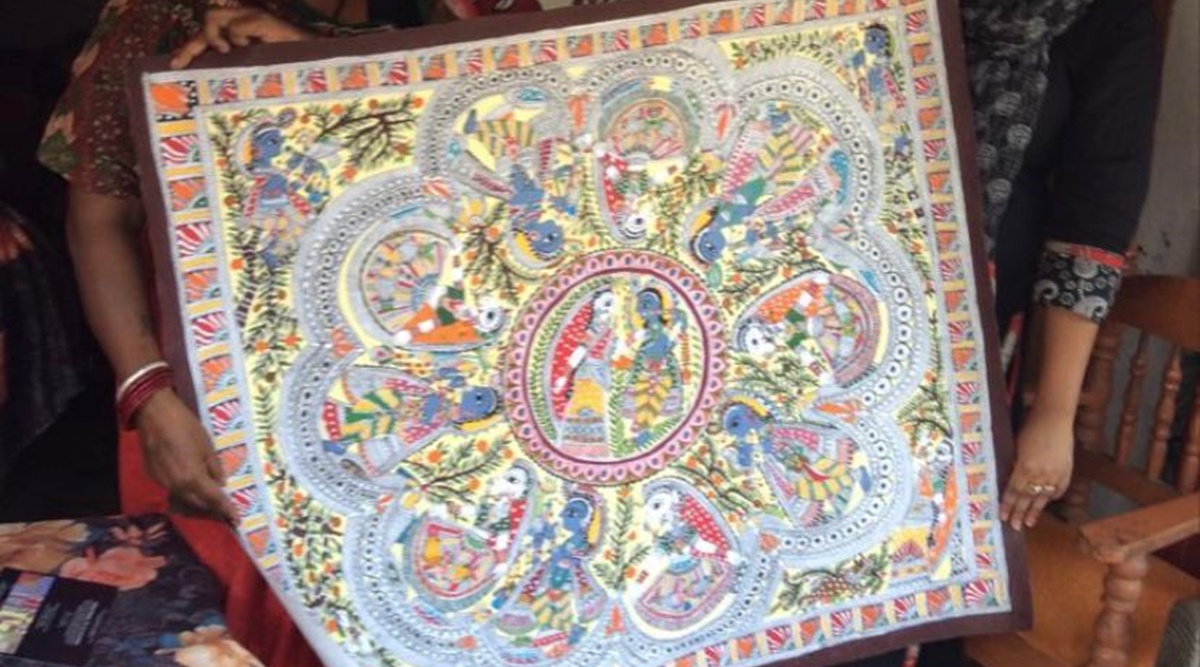A picture, they say, speaks a thousand words. If that picture has been painted by a Dalit woman, it says much more. Dalit art has evolved as a mode of resistance and protest. Done by a woman, it speaks of the triple domination, discrimination and oppression she faces, on grounds of poverty, gender and caste. One such Dalit woman recently won a national honour – Dulari Devi, a Mithila painter from Bihar, was honoured with the Padma Shri at a ceremony at Rashtrapati Bhavan last week.
ALSO READ | Padma Shri Ramchandra Manjhi and Dulari Devi: Tale of two artists, and of art, caste and grit in Bihar
“These paintings are my life, I can’t stay a day without making them,” Dulari Devi had told this author. Mithila, or Madhubani painting, is a distinct form of art practised in the Mithila region of Bihar, traditionally by upper caste women.

The now-celebrated Dulari Devi began her life in extreme poverty, born into the marginalised Mallah community. Her first brush with Mithila painting came while working as a domestic help at an upper case painter’s house, and she never looked back. But instead of copying the themes and motifs of upper castes, Dulari Devi poured her own self into her work, in the process investing it with her caste identity. One of the first paintings she sold was of a fishing village representing her caste’s – Mallahs were traditionally boatmen – occupation.
Dulari Devi’s art, thus, tries to track the interplay between meaning and power within hierarchical structures of religion, caste, gender and politics.
As political scientist and author Gopal Guru explains, the evolution of Dalit art, varying from folklores to paintings to folk poetry, has provided Dalits with an intellectual platform for creation, articulation and emancipation. He states that Dalit emancipation is not possible only through government policies, as they are temporal in nature, but through cultural and intellectual stimulation. Also, public recognition of Dalit art has in itself been an uphill battle, with traditional ‘art circles’ still associated with hegemony and monopoly.
So, when the whole country is taking note of Dulari Devi, it is pertinent to take a look at how marginalised women from Bihar are using art to make their stories visible.
In the region of Mithila, women from two sub-castes among the Dalit community — the Dusadh and the Chamar — have mastered the art of Mithila painting, with their work being distinct in theme and style from paintings by upper-caste women, which usually involves depictions of gods and goddesses.
The credit to Dalit inclusion in Mithila paintings goes to a German anthropologist, Erika Moser, who inspired and guided Dusadh women back in the 1970s to embrace the art for social recognition and economic independence.
When Moser, also a film-maker and social activist, first started persuading the impoverished Dusadh community to paint, the women, caught up in hard physical work, expressed inability to do so, as they had little awareness of the stories of Hindu deities usually depicted in Mithila paintings. A guiding hand from their high-caste counterparts seemed difficult owing to social differences.
This is where motivation and skill-specific advisory, from the likes of Moser and American anthropologist Raymond Lee Owens, came in handy. The result was that Dusadhs started capturing their oral history — such as the chronicles of local deity Raja Salhesa — and depictions of their primary god Rahu in their paintings.
 Raja Salhesa’s artwork on a hut (Source: Aditi Narayani Paswan)
Raja Salhesa’s artwork on a hut (Source: Aditi Narayani Paswan)
Lee Owens and Moser provided these women with financial support and also donated land in Jitwarpur for the purpose. Im 1977, with the likes of Dr Gauri Mishra, the Master Craftsmen Association of Mithila was set up. This association was very active during the lifetime of Owens, and worked in tandem with the Ethnic Arts Foundation of USA. With this backing, Dalit women created three major painting styles and techniques.
Geru Paintings
Geru (brown) included big figures of gods and goddess, animals and fields largely painted in light brown, along with some more brightly-coloured objects on paper. Resembling low relief figures on the walls of homes of Mithila inhabitants, these paintings didn’t take off too well and couldn’t attract many buyers.
ALSO READ | ‘The final step is to contain the agitation, the anger, within yourself’: Rahee Punyashloka
One major element of Dalit paintings is the life tree — a huge tree with images of animals, flowers, regular day-to-day household items, gods and human forms, in various stages of life. This trees of life has been used by Dusadh painters to depict intellectually stimulating concepts of cosmological inference, such as Raas, to a more regular depiction of the nomadic journey of migrant workers assembling in Jitwarpur and nearby areas during harvest time in order to find work.
Gobar Style
This style of painting was started by Jamuna Devi, by basically giving the paper a light gobar (cowdung slurry) wash, to impart to it a beautifully sullied look and feel on which bright colors come out very well. Jamuna Devi thus started a new and distinctive style of painting, which in coming times attained huge recognition and demand in commercial markets, besides being emulated by painters from upper castes. Holi colours on cowdung paper imparted an unusual brightness to her paintings, shooting Jamuna Devi into prominence. Her mud frescoes and paintings have been exhibited in Japan, New Delhi, Patna, and Varanasi.
Common motifs in the Gobar style include stories of local deities such as Rahu, Govinda and Salhes. Men from the region were instrumental in helping their womenfolk produce masterpieces. Ramvilas Paswan from village Laheriagunj and Roudi Paswan of village Jitwarpur were forces behind innovations in Dalit paintings. Their occupation as the local priests of the Dusadhs helped Dalit women get a hang of their own cultural history and know the gods like Raja Salhesa and Rahu better.
Godna art
Another art medium used by Dalit women in Madhubani to express their pain and restore mansuki (dignity to themselves) is the Godna. Traditionally, Godna, or the art of tattooing, was adopted particularly in the provinces in Bihar and Bengal to imprint prisoners, as well as demonstrate an upper caste distinction.
Thus, as research by historian Claire Anderson claims, lower caste women would either tattoo prisoners under imperial orders, or use their intellectual labour and creative expression on upper caste bodies to earn a living.
However, a third form of this tattooing is of resistance to discrimination — Dalit women were forced to wear ornaments of iron and inferior materials as prescribed by the Manu code. Beautifying their bodies with tattoos was thus seen as an inversion of that prescription.
Over the years, Godna art has moved from the body to paper. The early designs of tattoo paintings were simple black and white figures, like the ones drawn on the human body, and mostly revolved around auspicious image and onuses thought to be lucky in the Nat community. These tattoo paintings did not carry deep meaning or storytelling within them. This is where the contribution of Chano Devi, the early star of Godna paintings, is remarkable.
 Dulari Devi with Aditi Narayani Paswan (Source: Aditi Narayani Paswan)
Dulari Devi with Aditi Narayani Paswan (Source: Aditi Narayani Paswan)
Under her husband’s guidance, she started depicting the life histories of Salhesa to add meanings to the tattoos. Chano Devi with Shatnti Devi also started to experiment with natural colours in order to a create more distinctive style.
These colours later became the main identifier of Dalit Godna paintings, as
Most Read 1Chandrayaan-3 mission: Dawn breaks on Moon, all eyes on lander, rover to wake up 2As Indo-Canadian relations sour, anxiety grips Indian students, residents who wish to settle in Canada 3Karan Johar says Sanjay Leela Bhansali did not call him after Rocky Aur Rani: ‘He’s never called me but…’ 4Gadar 2 box office collection day 40: Hit by Shah Rukh Khan’s Jawan onslaught, Sunny Deol movie ends BO run with Rs 45 lakh earning 5Shubh’s tour in India cancelled: Why is the Canada-based singer facing the music?
other painters too started to abandon the use of Holi colours in favour of those made from cowdung base, leaves, flowers, vegetables, barks, and roots.
The journey of Dalit paintings from Gobar to Godna finally established Dusadhs and Chamar Caste women in the field of folk art.
Also ReadA silent protest: This 80-foot-tall mural in Kolkata shows masculinity th…Michael Jackson’s moonwalk hat to be auctioned in ParisAmrita Sher-Gil’s painting breaks record for the most expensive Indian ar…In her debut solo, Ishita Chakraborty highlights the fragile landscape of…
📣 For more lifestyle news, follow us on Instagram | Twitter | Facebook and don’t miss out on the latest updates!
© IE Online Media Services Pvt Ltd


